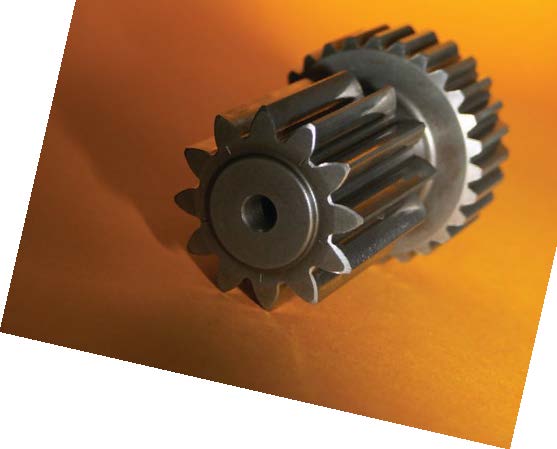Competition for metal surfaces
R. David Whitby | TLT Worldwide September 2013
These five additive types can help improve your machine’s performance.

www.canstockphoto.com
ALMOST ALL LUBRICANTS now use combinations of additives dissolved in base oils that deliver the performance properties required of modern machinery. The key to achieving the appropriate level of performance of a finished lubricant lies in understanding the interactions of base oils and additives and matching these to the types and operating conditions of the machinery it is required to lubricate.
Additives are chemical compounds added to base oils to impart specific properties to a finished lubricant. Their functions can be grouped as to whether they:
•
Enhance existing base oil properties: antiwear, lubricity, friction reduction, corrosion inhibition.
•
Impart new properties: detergency, dispersancy, emulsifiability.
•
Provide physical improvements: viscosity index improvement, pour point reduction, antifoam.
•
Provide chemical improvements: oxidation inhibition, extreme pressure load-carrying.
Some additives impart more than one property. These are called multifunctional additives. Many of the additive types listed above interact with metal surfaces.
Antiwear (AW) and lubricity additives improve the boundary lubricating abilities of base oils by lowering or eliminating wear and friction between sliding or rolling metal surfaces. Extreme pressure (EP) additives protect metal (usually ferrous; iron and steel) surfaces under very high loads or in metal cutting or forming operations. Corrosion inhibitors protect ferrous surfaces from corrosion (rusting) by atmospheric oxygen. Metal passivators control the aggressive chemical reactions of some chemicals on yellow metal (copper, bronze, brass) or white metal (silver, magnesium) surfaces. Friction modifiers alter the frictional behavior of contacting metal/metal or metal/non-metal surfaces, as in bearings, friction clutches, wet brakes, torque converters and continuously variable transmissions.
Herein lies a problem for lubricant-formulation chemists and tribologists. Antiwear, lubricity, extreme pressure, corrosion inhibitor, metal passivator and friction-modifier additives all form films on metal surfaces.
Antiwear and friction-reducing additives, sometimes called boundary-lubricating additives, are generally polar chemicals with a long, oil-soluble chain that form an adsorbed film on the metal surface, with the polar ends attached to the surface and the long-chain tail projecting away from the surface. These attached films help to keep the surfaces apart, thereby reducing wear and friction under mild sliding or rolling conditions. However, if sliding is severe, the films can be rubbed off. Under heavy loads or at higher temperatures, when more severe sliding conditions exist, EP additives react chemically with metal surfaces to form relatively oil-insoluble surface films, which minimize severe surface damage and reduce friction. Rust inhibitors usually have a high attraction for metal surfaces and, by either physical or chemical interaction, form tenacious films that prevent water from reaching the surface. Metal passivators perform the same type of function by preventing chemical attack by more aggressive surface-active additives.
In general, whichever of these five types of additives gets to the surface first and forms the strongest layer has the biggest effect. The interactions are primarily with metal oxides, except for EP additives when severe asperity contact results in the creation of fresh metal. The physical actions are adsorption, while the chemical actions usually require an activation temperature above which the action is initiated.
Lubricant formulators need to balance the types and amounts of each of these additives in order to achieve the desired lubricant performance properties. Too much or too active antiwear may disrupt corrosion inhibition or metal passivation. Some antiwear additives have friction-increasing properties. EP additives are not usually combined with AW additives, but they may still be procorrosion and may react chemically with yellow and white metals.
Also, these additives (and others) can have detrimental side effects, especially if they are used in excessive amounts or if interactions occur with other additives. The selection of a rust inhibitor requires care since some can cause corrosion of nonferrous metals. Some may also cause problems by emulsifying water.
The final difficulty for lubricant formulators is that all these surface-active additives are likely to be depleted over time because they gradually react physically or chemically with the surfaces and are removed from the lubricant.
 David Whitby is chief executive of Pathmaster Marketing Ltd. in Surrey, England. You can reach him at pathmaster.marketing@yahoo.co.uk
David Whitby is chief executive of Pathmaster Marketing Ltd. in Surrey, England. You can reach him at pathmaster.marketing@yahoo.co.uk.